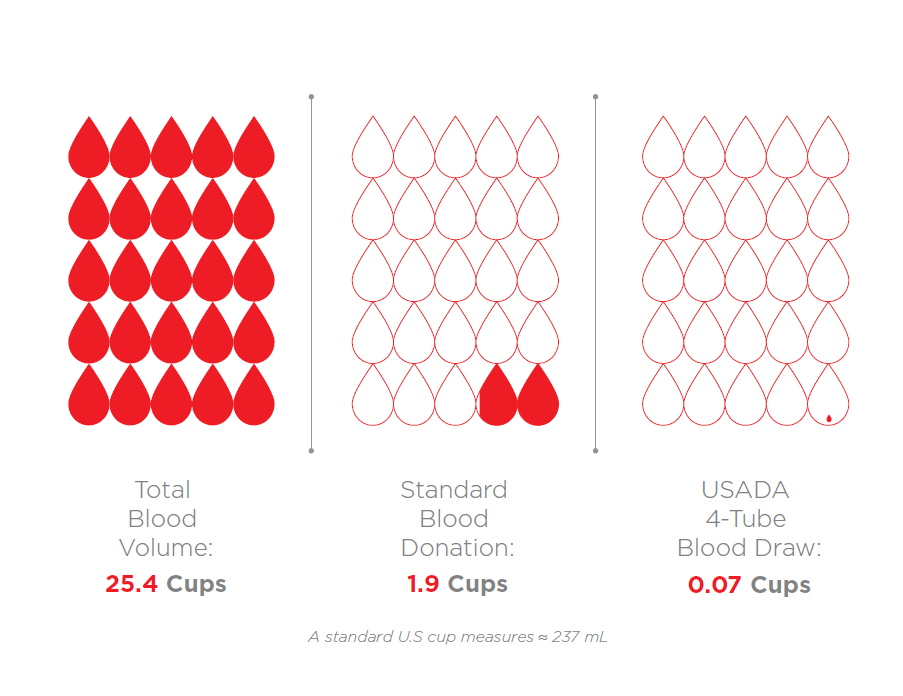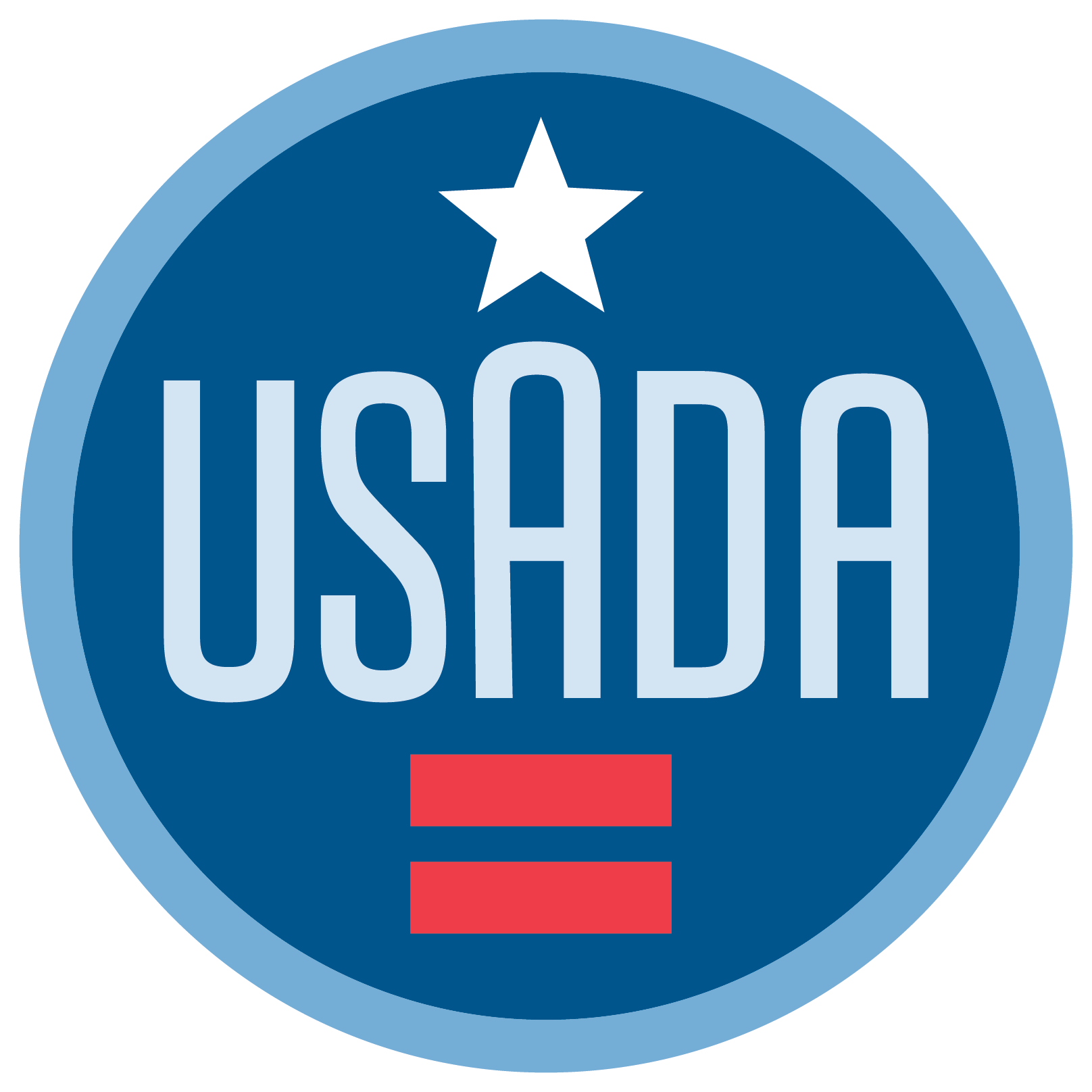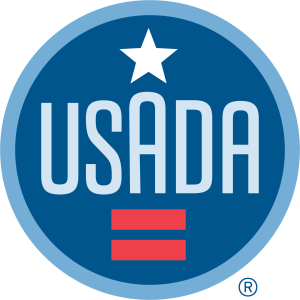Click here to see how the sample collection process has been modified with COVID-19 safety protocols.
Blood Sample Collection Process
Athletes who compete in events sanctioned by, are members of, or license holders of a National Governing Body or International Federation, or who fall under the USADA testing jurisdiction as defined in the USADA Protocol for Olympic and Paralympic Movement Testing, are subject to blood testing. Blood testing allows for the detection of additional substances that in some cases may not be able to be detected in urine, dried blood spot, or other World Anti-Doping Agency (WADA) approved matrices. Additionally, blood samples allow for the use of longitudinal data collection, often called the athlete biological passport. Longitudinal data collection monitors certain bio markers over time to detect the use of performance-enhancing substances and/or methods.
This page outlines the in-competition testing process for a blood sample collection.
Explore the Steps of the Blood Collection Process
Click on each step to open the details.
Athlete Selection
Athletes can be selected for testing at anytime and at any location.
When USADA develops its plan to allocate testing resources, several considerations factor into the approach to testing athletes. They can include the physical demands of the sport, the history of doping in the sport, training periods and the competition calendar, and many other key considerations. When athletes are selected for testing, they may be required to provide a urine sample, a blood sample, dried blood sport, and/or any other WADA-approved matrices. Athletes are not selected for testing by the Doping Control Officers.
Athletes selected for an in-competition test may be selected based on rules that the international federation or a local organizing committee has established. This could include a place finish within the competition as well as being randomly selected or target tested. Click here for more information on test distribution planning.
Athlete Notification
A USADA Doping Control Officer (DCO) or chaperone will notify athletes in person that have been selected for testing.
Athletes notified for testing will be asked to sign a document to acknowledge that they were notified and of their requirement to provide a sample of blood, urine, dried blood spot, and/or any other WADA-approved matrices. Athletes will also be informed of their rights and responsibilities and should carefully read the statements prior to signing. Once athletes are notified of their selection for testing, they must always remain within direct sight of the DCO or chaperone.
Following notification, the athlete will remain under direct observation of the DCO or chaperone. If the athlete has been notified for in-competition testing, they must immediately report to the Doping Control Station. Under certain circumstances, an athlete may request a delay in reporting for valid reasons; however, this request may not be permitted if it is not possible for the athlete to be continuously chaperoned. Such circumstances may include:
• Competing in further events;
• Participation in a victory ceremony;
• Fulfillment of media commitments;
• Performing a warm-down;
• Obtaining necessary medical treatments;
• Locating a representative and/or interpreter;
• Obtaining photo identification or
• Completing a training session.
If an athlete is selected to provide a blood sample, a blood collection officer (BCO) will accompany the DCO throughout the blood collection session. A BCO is a qualified phlebotomist who will perform the actual blood collection and could be dressed in scrubs, a lab coat, or other professional attire. The DCO will process the blood collection session. In some cases, the DCO may also act as the BCO. If the DCO is also a BCO, they will have the required certification and can provide a credential if requested.
Athletes have the right to ask the DCO or the BCO to provide an explanation of the process should they have questions.
In addition, athletes are encouraged to have a representative present throughout the process. It required for minors and encouraged for athletes with an impairment to also have a representative accompany them throughout the process.
Selection of Kits
Athletes are given a choice of individually sealed security and accessory kits from which to choose.
Athletes should choose and inspect the collection kits and accessory kits to ensure they have not been tampered with and are not defective. Security kits contain the security containers used to transport your blood sample to the lab; collection kits include the collection tubes for blood; and accessory kits contain the needles and other after-care supplies. Athletes should also check the contents of the security kits to confirm the sample code numbers on the containers and labels match. Athletes should remove the containers from their packaging. The kits will be used to transport the athlete’s blood sample(s) to the lab.
Blood Collection
A number of steps occur during the blood collection process to ensure blood sample requirements are met.
On average, about 15-16 mL, or less than two tablespoons, of blood will be drawn during the blood collection process. The amount of blood drawn should not affect an athlete’s performance. A USADA four-tube blood draw only requires .07 cups of blood, which is 4% of a normal blood donation and .3% of your total blood volume.

To control for blood plasma volume changes, the athlete will be asked to remain seated for a minimum of ten (10) consecutive minutes prior to providing a blood sample. The BCO will begin by preparing the athlete’s preferred site for the blood collection process by cleaning the area with a sterile disinfectant swab. The BCO will apply a tourniquet to aid in the collection, and the BCO will begin to draw the blood sample. A blood draw will be attempted a maximum of three times.
During the blood collection process, several collection tubes of blood could be drawn, but keep in mind, less than two tablespoons of blood will be drawn. After the relevant tubes are filled with blood, the BCO will label each tube with the corresponding sample code number on the security containers, confirming with the athlete that each tube was labeled appropriately.
After collecting the blood sample, the BCO will provide any after-care measures and instructions.
Minor modifications, such as the number of tubes of blood drawn and the length of time that an athlete remains in a seated position, can vary between USADA and international federation protocols. Rest assured that the protocols fall within the International Standard for Testing & Investigations requirements.
Securing The Blood Samples
The security of an athlete’s blood sample, as well as their health and safety, are very important, and steps are taken to protect each.
The DCO will direct the BCO to secure the collection containers. The security containers are then placed in a transport box and sealed for shipment.
Documentation
After the blood sample is secured in the security containers, the DCO will complete the remaining documentation with the athlete.
The DCO will guide the athlete through the remaining documentation corresponding to the blood collection session. During the completion of the final documentation, the athlete will be asked a series of questions that correspond to the documentation. Once the documentation has been reviewed, the athlete, their representative (if applicable), the DCO, and the BCO will sign the document to verify the accuracy of the information. The athlete will receive the appropriate document copies and the remaining copies will be sent to USADA and the WADA-accredited laboratory via paperwork shipment of digital delivery.
Providing Feedback
Athletes have the right to provide feedback about the collection session.
Feedback is an important part of the doping control process. After each USADA collection session, a USADA DCO will provide the athlete with an Athlete Evaluation Form to provide feedback related to the collection session. USADA encourages athletes to provide feedback about their experience. Every form that is submitted to USADA is reviewed.
Shipment to a WADA Lab
After the conclusion of the blood collection session, the DCO will ship the athlete’s blood sample(s) to a WADA-accredited laboratory for analysis.
The chain of custody of the sample is closely monitored by USADA and the documents that accompany the blood samples(s) to the WADA-accredited lab do not include your name. The sample code number written on the documentation is the only information the lab uses to identify the athlete. The sample(s) may be stored for eight years or longer.
Once the sample has been processed, you will receive a notification letter from USADA that states your analysis has been completed. If your blood is drawn by another anti-doping organization, you may not receive your results or a notification letter.
Click here to explore the six-step journey of a Sample, from collection to storage.



